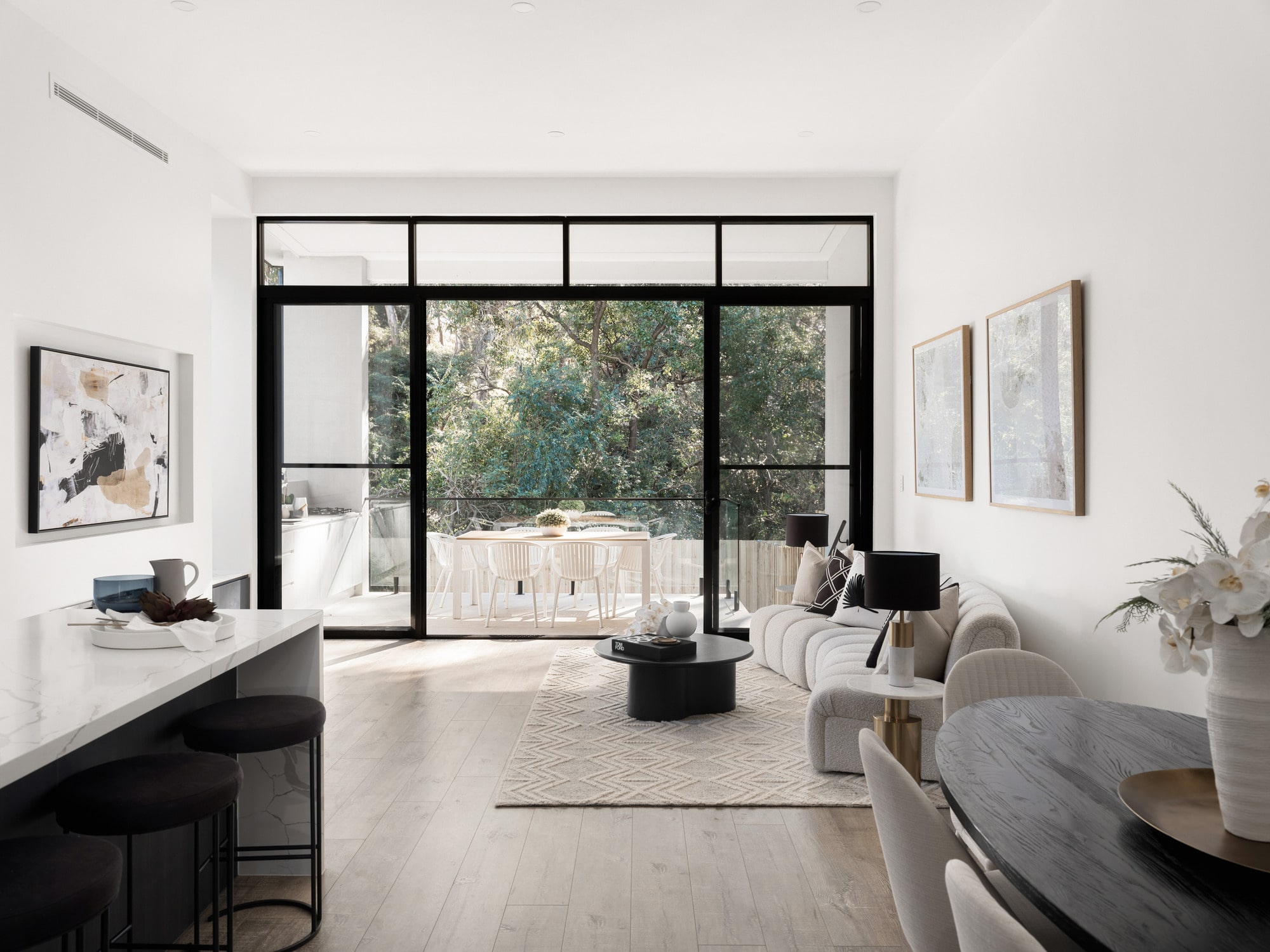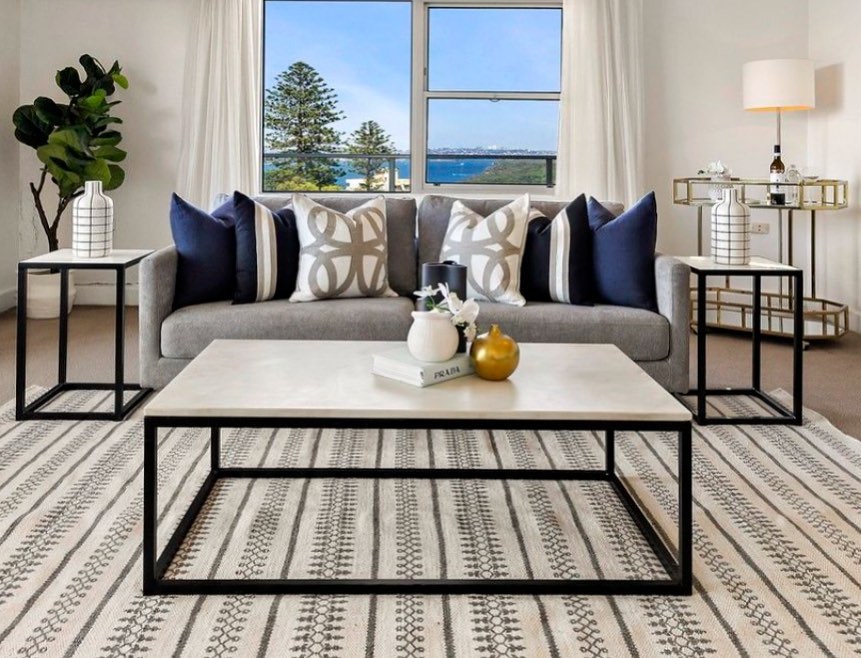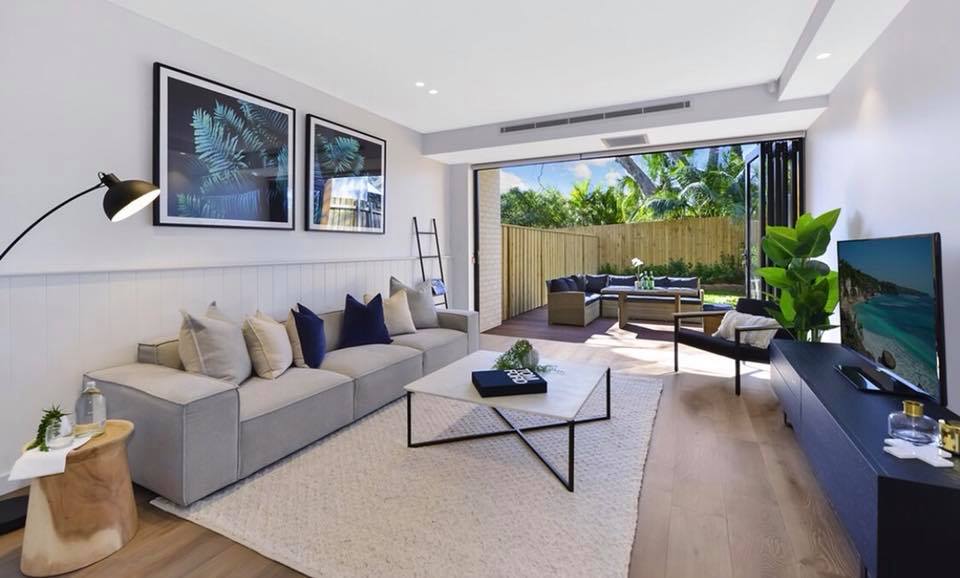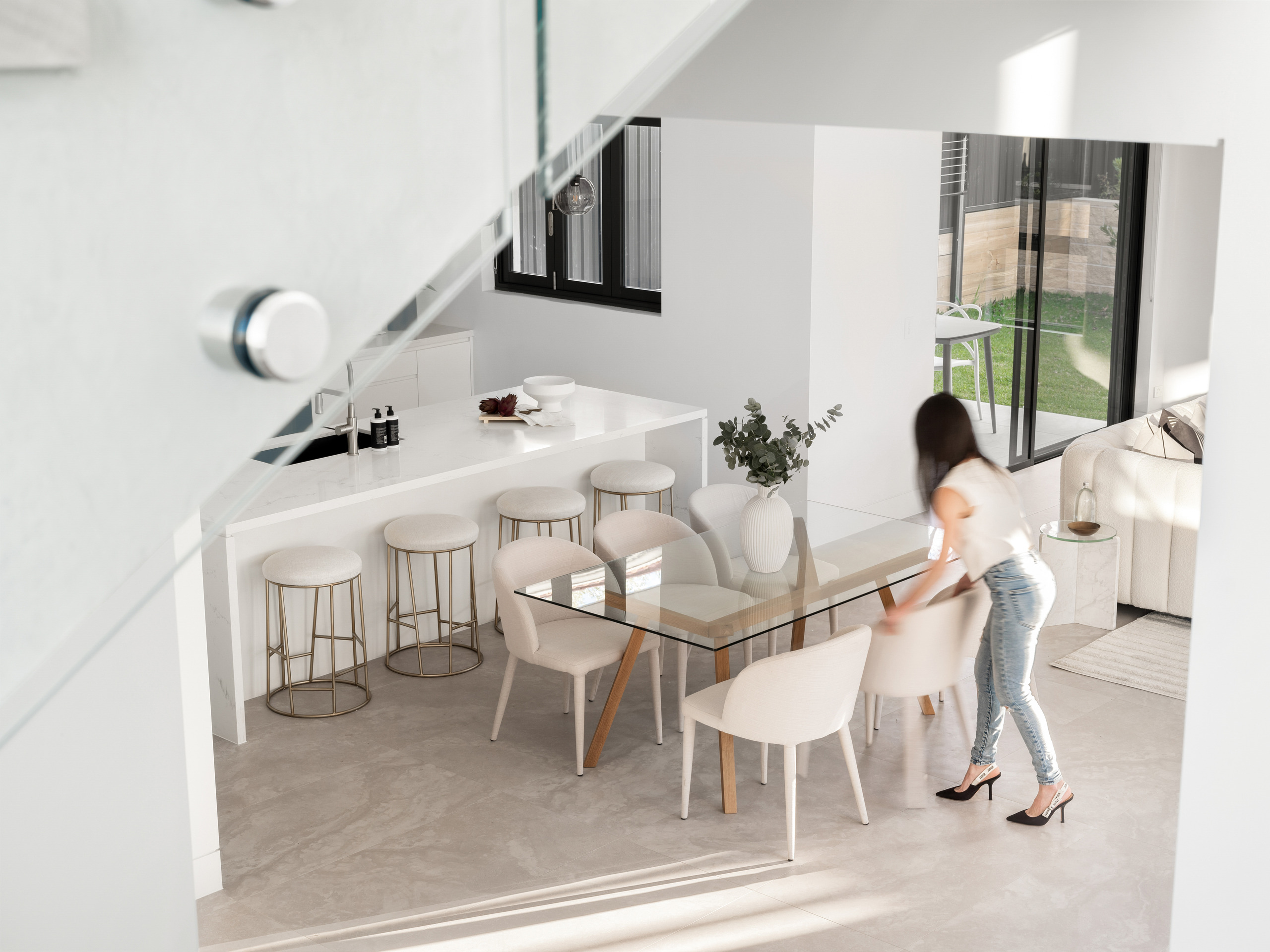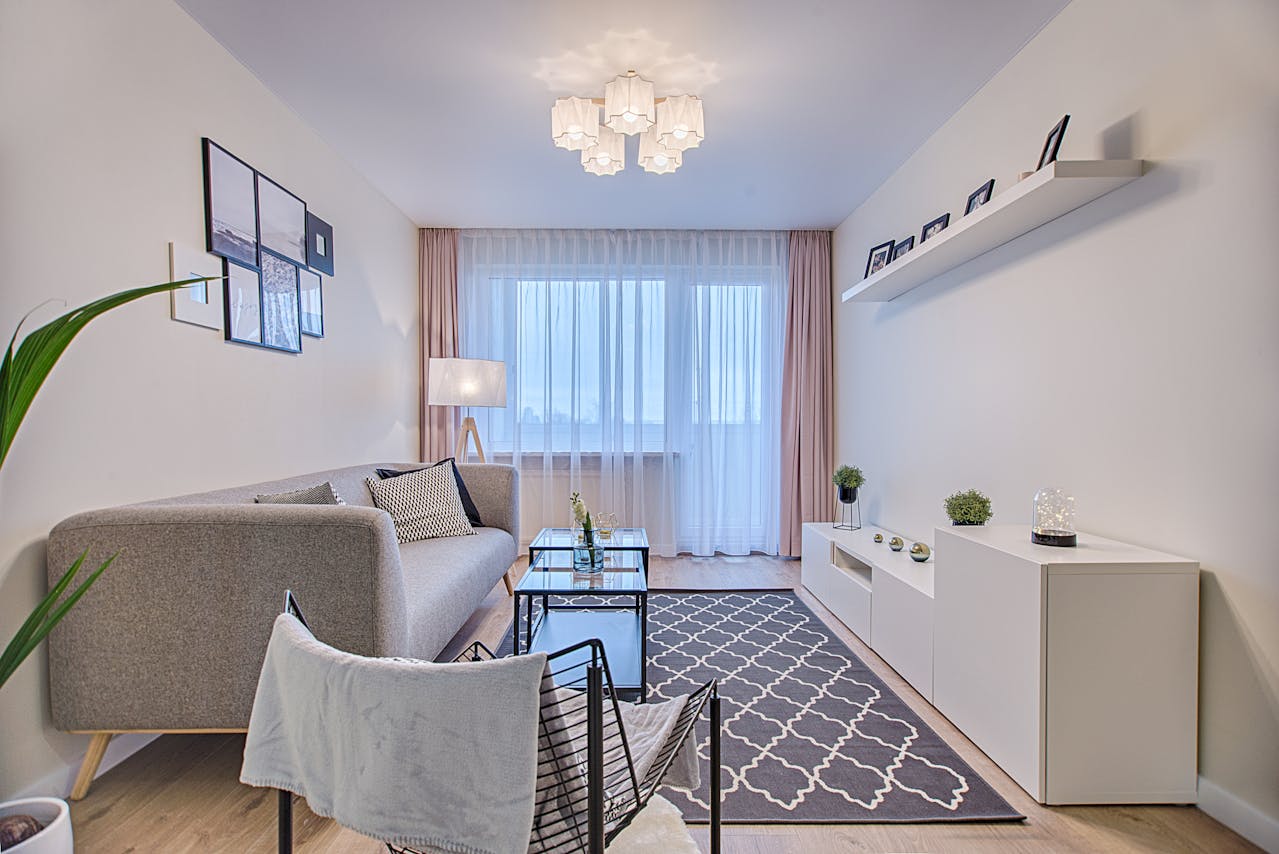
Explaining The 7 Elements Of Interior Design
Diving into interior design can be daunting, with endless decisions ranging from how best to use your space to choosing the perfect colour palette. Achieving a harmonious balance that feels both uniquely personal and broadly appealing is no small feat. This blog post will break down the 7 elements of interior design.
Understanding these foundational principles of interior design will empower you to create functional spaces that truly resonate with your personal style.
1. Space
Space is often considered the foundation of all interior design, acting as the canvas upon which all other elements are layered. It encompasses both the volume of a room and how that room is divided, including the open areas (negative space) and the areas filled with objects (positive space).
Proper space management is crucial because it influences the entire layout and flow of a room. Effective space use ensures that a room feels neither overcrowded nor underutilised, maintaining balance and harmony. By understanding and manipulating space, you can create rooms that are functional, efficient, aesthetically pleasing and inviting.
2. Line
Lines in interior design are critical as they define the room’s structure and influence its balance. Lines create harmony, unity and contrast, directly affecting how a space feels and flows. There are three kinds of lines, each playing a specific role in a space.
Here’s how they contribute to the overall balance and aesthetic of a room:
- Horizontal lines —These lines, like those found in tables and other furniture, lend a sense of stability and calm.
- Vertical lines — Lines such as those in doorways and tall windows, evoke feelings of freedom and strength and can make spaces appear larger.
- Dynamic lines — Dynamic lines are features or pieces that include zigzags or curves, such as staircases, curved archways and rounded furniture and fixtures. They can add movement and excitement, drawing attention and guiding the eye through the space.
3. Form
Form is the element of interior design that refers to the shape of any object in a space. It encompasses both geometric and organic shapes. Geometric shapes are anything angular or structured, while organic shapes are natural and curved.
They play a vital role in defining a room’s style and feel, interacting with space by occupying it, interacting with lines by defining edges and silhouettes, and finally, interacting with each other to create a sense of unity or contrast.
Harmony is achieved when forms are balanced in size and placement, avoiding overcrowding or sparse arrangements. Thoughtful consideration of form ensures that different elements of a room feel cohesive and aesthetically pleasing, enhancing the space’s functionality and visual appeal.
4. Light
Light plays a pivotal role in interior design by affecting the mood and perception of space. There are two types of light you can use to create a beautiful space:
- Natural light — This refers to sunlight that enters a space through windows and skylights. It makes spaces feel larger and more open, bringing warmth and a sense of well-being while magnifying the true colours and textures of the room.
- Artificial light — On the other hand, this light is sourced from electrical fixtures. It is instrumental in setting the mood and highlighting design elements. Artificial light can be manipulated through various fixtures and bulbs to create different effects, from soft and cosy to bright and energetic.
Using a combination of both natural and artificial light sources allows for greater control over the ambience and functionality of any given space.
5. Colour
In interior design, colour is a powerful tool used to influence mood and create unity within a space. Different colours can evoke a range of emotions, from calmness and relaxation typically associated with blues and greens to energy and warmth often felt with reds and oranges.
Harnessing colour effectively allows you to create a cohesive atmosphere that reflects the intended feel and function of the room. For example, softer hues might be used to promote tranquillity in bedrooms, while vibrant colours could energise a living room or kitchen.
6. Texture
In interior design, texture refers to the surface quality of a material, which can be seen and felt. Texture plays a central role in adding depth and visual interest to a space, making environments more engaging and dynamic. You can create a more layered and inviting atmosphere in any interior space by strategically incorporating textures, such as:
- Textured walls — Add a tactile dimension to walls and enrich the visual complexity of a room with different wallpapers, wall coverings and paint finishes.
- Upholstery — Opt for different fabrics such as velvet, silk or tweed to introduce varied sensory experiences.
- Rugs and carpets — Provide softness underfoot and add a contrast to harder flooring materials with different decorative and/or functional textile pieces.
- Curtains and drapes — Use curtains and drapes to add texture and control how light enters your space. Heavy fabrics can add a luxurious feel, while light linens can bring airiness.
- Throw pillows and blankets — Mix in textures like wool, cotton and faux fur to add layers of comfort and style.
- Wooden elements — Feature wooden pieces and experiment with anything from polished to distressed finishes to offer a range of tactile experiences.
- Metallic finishes — Make use of shiny, matte or brushed metal finishes for different effects in light reflection and feel.
7. Pattern
Patterns play a vital role in adding character and visual interest to a space. They introduce diversity in design and can help to express a room’s aesthetic and thematic undertones.
However, balancing patterns is key to ensure they enhance rather than overwhelm a room. You need to carefully select and position patterns to create a richly detailed and harmonious interior that captivates without overwhelming. Here are some tips on how to achieve that balance:
- Mix scales — Combine large-scale patterns with smaller ones to keep the design dynamic without causing visual chaos.
- Limit your palette — Stick to a consistent colour scheme when mixing patterns to maintain cohesion.
- Distribute evenly — Spread patterned elements throughout the space rather than concentrating them in one area to create a balanced look.
- Incorporate solids — Use solid colours in larger furniture pieces or walls to anchor the patterns and give the eye a place to rest.
Integrating the 7 elements of interior design
Integrating the 7 elements of interior design — space, line, form, light, colour, texture and pattern — is crucial for achieving your goals in any space. When you effectively combine these elements, you can enjoy a space that improves your everyday life and meets your design preferences while remaining practical and comfortable.
If you’re planning a design project, make sure to carefully consider how each element can influence the overall atmosphere and utility of the room. Or, you can take the thinking out of the equation by hiring Adore Property Styling’s team of experts to handle your project.
Our experienced stylists masterfully balance these elements to enhance the spatial dynamics and create signature interiors that resonate with both homeowners and potential buyers.
Ready to transform your space?
Bringing together the principles of interior design can dramatically enhance your living or working environment, but achieving the perfect balance can be challenging. At Adore Property Styling, we’re masters in crafting functional and stylish spaces, so whether you’re looking to start a project or need some expert advice, our team is here to help.
If you have any questions, check out our FAQs. You can also learn more about our process or contact us directly for more personalised assistance. Let Adore Property Styling guide you — reach out today and take the first step towards a perfectly styled interior!


